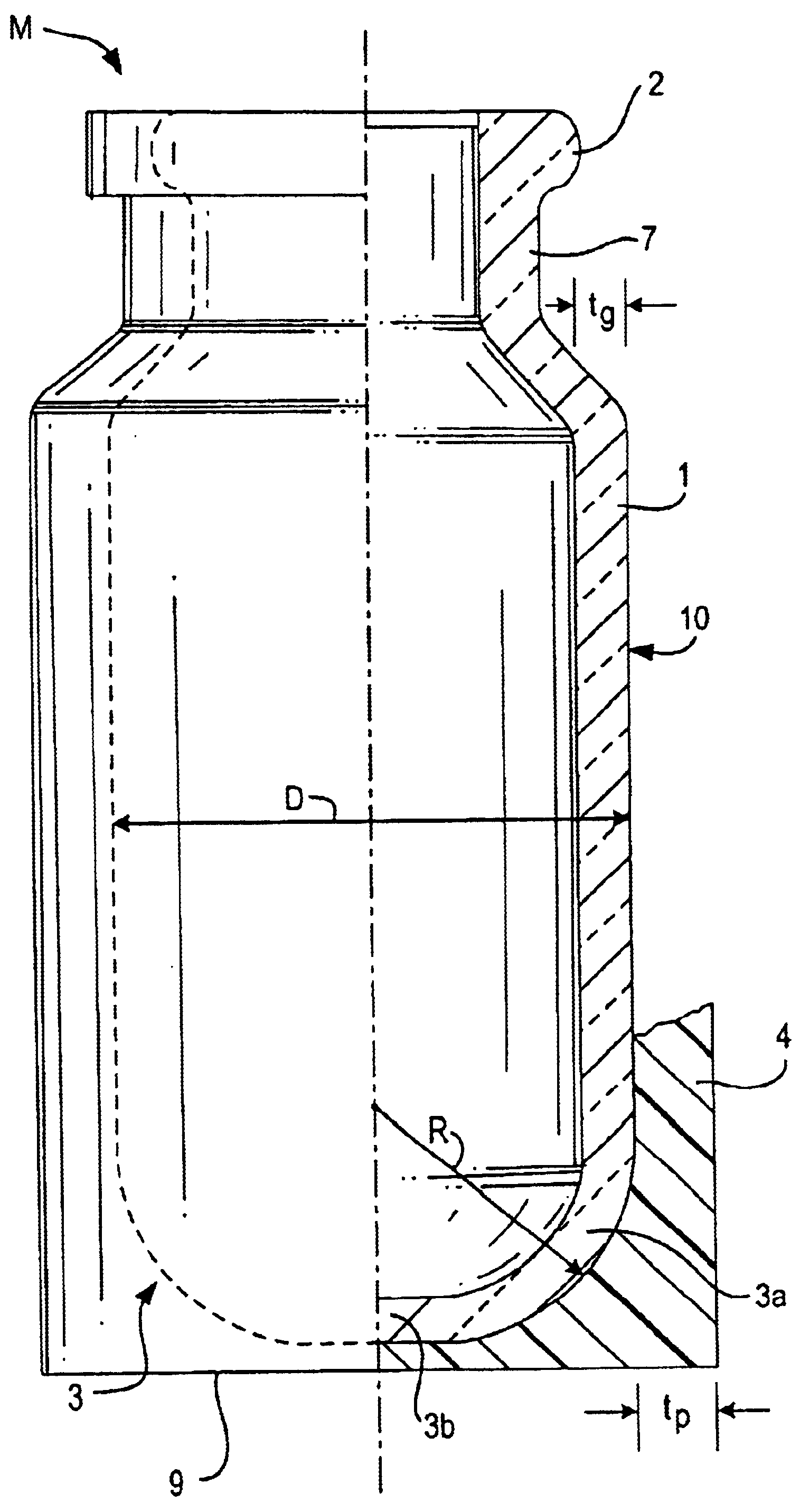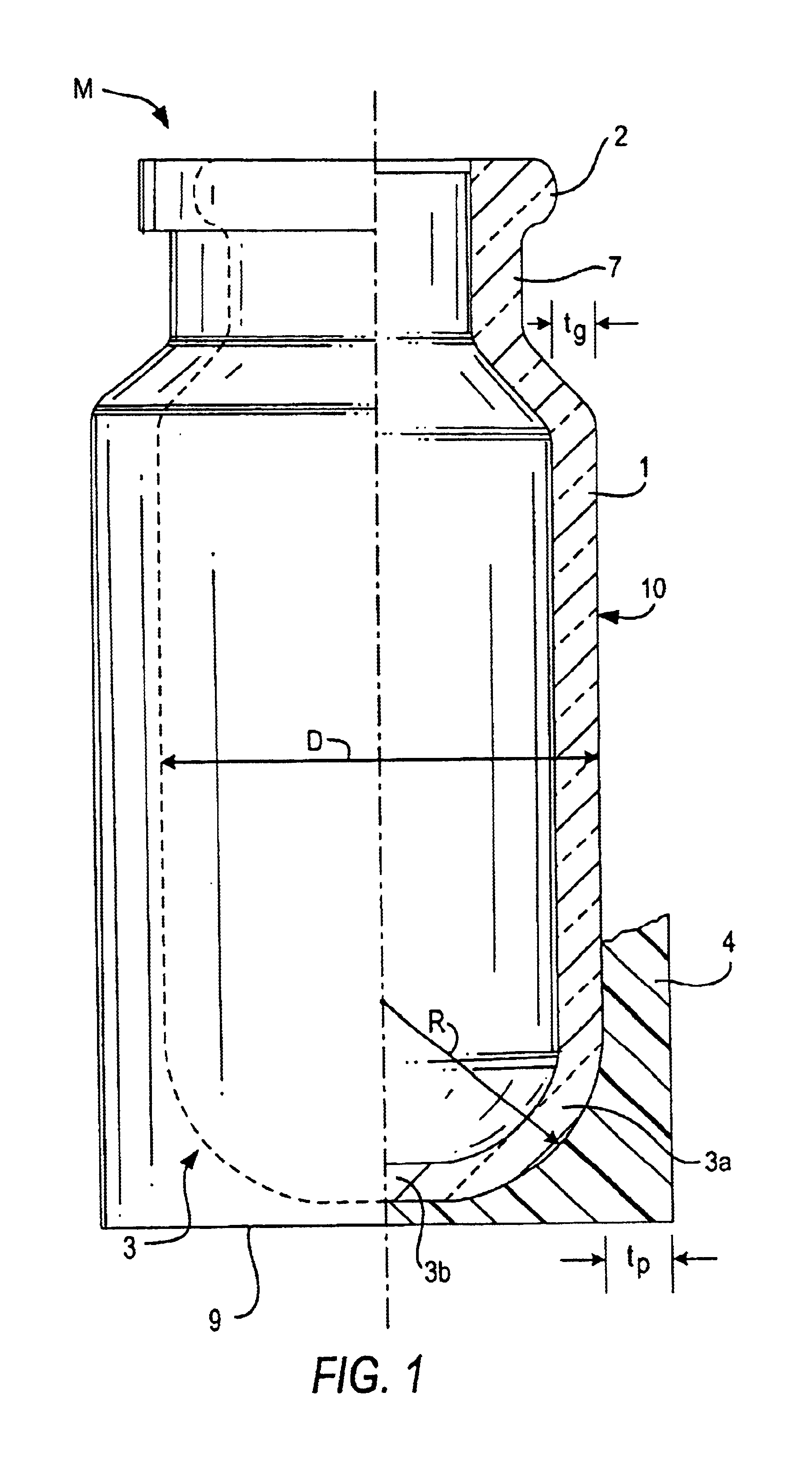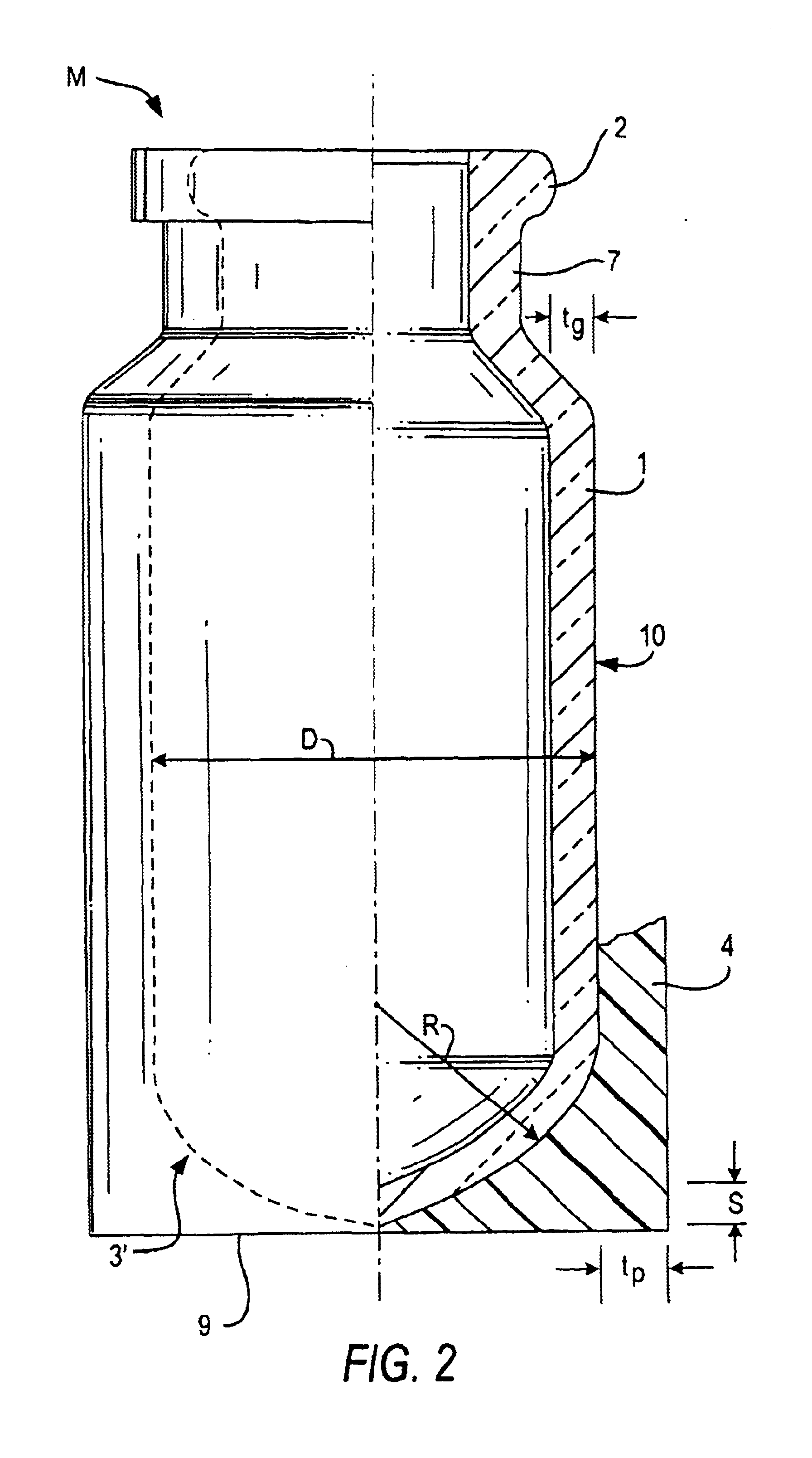Closeable glass container comprising a plastic coating applied by injection molding and method for the production thereof
a glass container and plastic coating technology, applied in the field of closed containers, can solve the problems of inability to precisely shape the coated bottle, relatively expensive, and inability to apply softened thermosetting resin to glass bottles using injection molding technique, and achieve the effect of reducing the waste produced during injection molding
- Summary
- Abstract
- Description
- Claims
- Application Information
AI Technical Summary
Benefits of technology
Problems solved by technology
Method used
Image
Examples
Embodiment Construction
The glass containers covered by injection molding—glass inlets—described are used preferably in the medical field. They can comprise various configurations. For instance, FIG. 1 shows a partial longitudinal sectional, partial side view of a glass inlet 10 that is fillable with a medically effective substance sprayable as aerosol. A discharge opening or mouth M having a crimp or sealing rim 2 is formed on the container wall 1, to which a metering valve, i. e. a delivery element, can be attached. The sealing rim 2 is connected to the body of the glass inlet 10 via a neck section 7. The base section 3 bulges distinctly in the edge region 3a, but has a flat center section 3b with a relatively small surface.
A plastic coating 4—which is shown in FIG. 1 in an enlarged dimension and not in entirety—is applied to the glass inlet 10 by a method according to the reaction injection molding system. The plastic coating 4 is applied in the base section 3 in such a fashion that a flat standing surf...
PUM
| Property | Measurement | Unit |
|---|---|---|
| thickness | aaaaa | aaaaa |
| volume | aaaaa | aaaaa |
| thickness | aaaaa | aaaaa |
Abstract
Description
Claims
Application Information
 Login to View More
Login to View More - R&D
- Intellectual Property
- Life Sciences
- Materials
- Tech Scout
- Unparalleled Data Quality
- Higher Quality Content
- 60% Fewer Hallucinations
Browse by: Latest US Patents, China's latest patents, Technical Efficacy Thesaurus, Application Domain, Technology Topic, Popular Technical Reports.
© 2025 PatSnap. All rights reserved.Legal|Privacy policy|Modern Slavery Act Transparency Statement|Sitemap|About US| Contact US: help@patsnap.com



